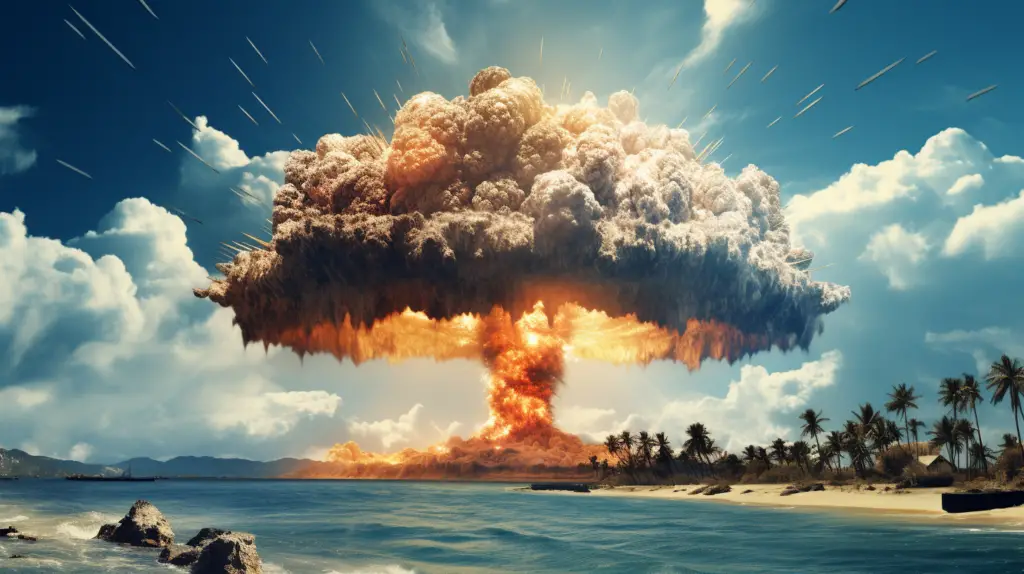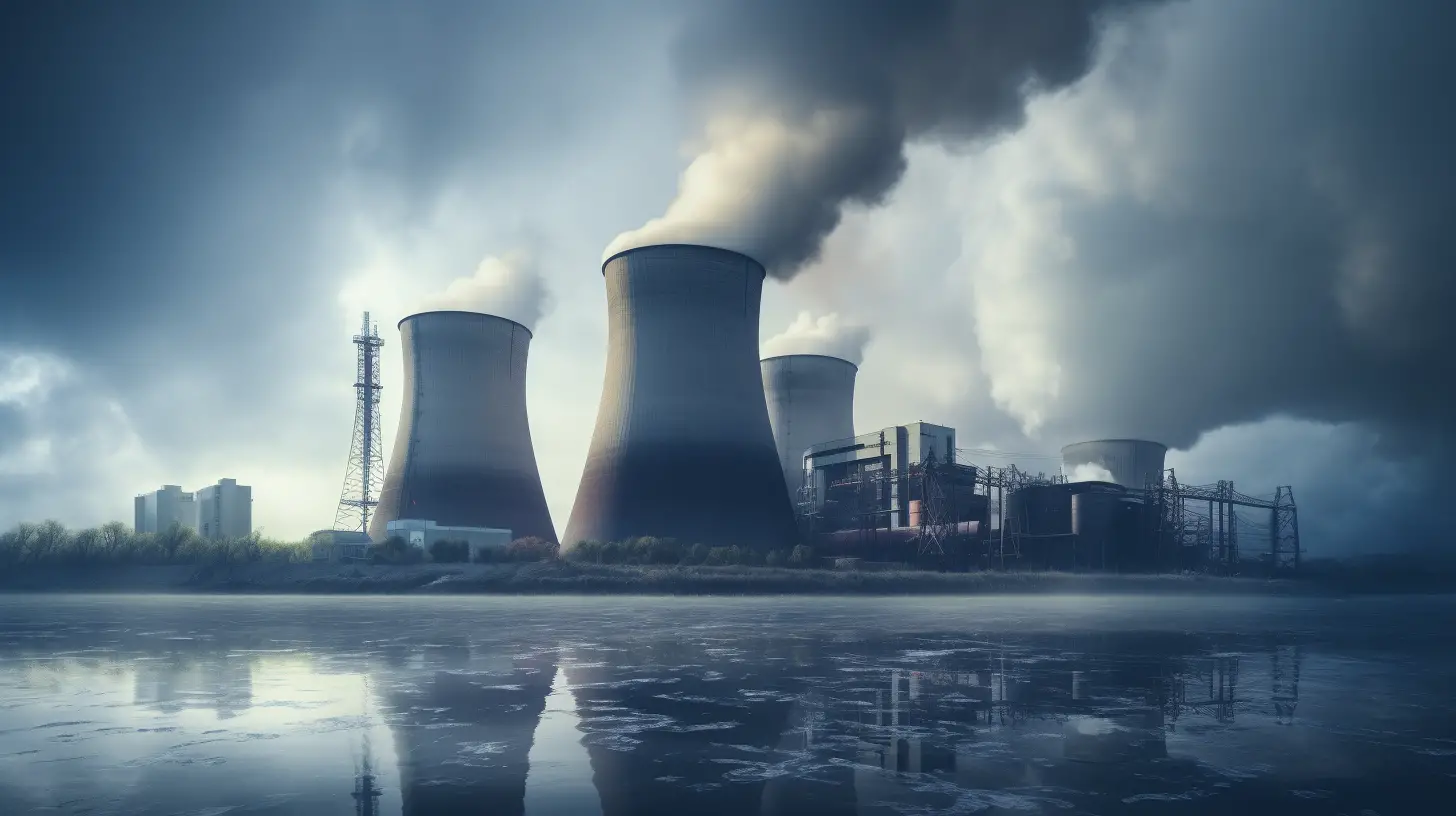The hydrogen bomb, also known as the thermonuclear bomb, represents one of the most formidable applications of nuclear physics. By harnessing the colossal power inherent in nuclear fusion – the same process that fuels the Sun – these devices have forever reshaped the global landscape and our understanding of destructive potential. From the first theoretical ideas to the political implications of these weapons, the hydrogen bomb is a testament to human scientific ingenuity and a chilling reminder of our capacity for unparalleled devastation.

This article aims to delve into some interesting, yet often lesser-known facts about the hydrogen bomb.
- Conceptually Birthed from the Sun: The principles of thermonuclear fusion that powers the hydrogen bomb are the same ones that drive the Sun’s immense energy. Scientists have long sought to harness this form of energy, leading to the development of the bomb.
- Invented during the Cold War: The first hydrogen bomb was created during the Cold War, a period of intense rivalry between the United States and the Soviet Union. It was in this climate of escalating tensions and arms race that the H-bomb was born.
- First Hydrogen Bomb was nicknamed “Mike”: The world’s first hydrogen bomb test, codenamed “Ivy Mike,” was conducted by the United States on November 1, 1952, in the Marshall Islands.
- A Multistage Device: Unlike atomic bombs, hydrogen bombs are two-stage devices. The first stage, or primary, is a fission bomb that generates immense heat and pressure, igniting the second stage, or secondary, where fusion occurs.
- Hydrogen Isotopes Are Key: The ‘hydrogen’ in the hydrogen bomb refers to its use of hydrogen isotopes – specifically deuterium and tritium – in the fusion process.
- Not all Hydrogen Bombs are Equal: The design and efficiency of a hydrogen bomb can vary greatly, leading to a wide range of explosive yields, from a few kilotons to several megatons of TNT.
- The Most Powerful Bomb Ever: The largest thermonuclear weapon ever detonated was the “Tsar Bomba” by the Soviet Union in 1961. It had a yield of 50 megatons, which is more than 3,000 times the power of the Hiroshima atomic bomb.
- H-Bombs Can Be Miniaturized: Through advanced nuclear technology, hydrogen bombs can be miniaturized to fit into intercontinental ballistic missiles (ICBMs), making them a key component in many nations’ strategic arsenals.
- The Castle Bravo Accident: The largest U.S. nuclear test, “Castle Bravo,” in 1954, resulted in significant radioactive contamination due to an unexpectedly high yield. This incident highlighted the dangers of nuclear testing.
- Hydrogen Bombs Led to the Partial Test Ban Treaty: The environmental and human health impacts of H-bomb testing led to the Partial Test Ban Treaty in 1963, prohibiting all test detonations of nuclear weapons except for those conducted underground.
READ MORE: 25 Interesting Facts about Nuclear Power Plants - H-Bombs Have Never Been Used in War: Despite their destructive potential, hydrogen bombs have never been used in warfare. Their primary function has been as a deterrent during the Cold War and in modern geopolitical relations.
- Thermonuclear Fusion is the Goal for Clean Energy: The same fusion process used in hydrogen bombs is being researched for peaceful purposes. If controlled, fusion could provide a virtually unlimited and clean energy source.
- H-Bombs Influence Space Policy: The Outer Space Treaty of 1967, prompted in part by the development of thermonuclear weapons, prohibits the placing of weapons of mass destruction in Earth orbit, on the Moon, or any other celestial body.
- Development by More Than the Superpowers: While the U.S. and the Soviet Union were the first, other nations such as France, China, the UK, and possibly North Korea have also developed hydrogen bombs.
- Stepping Stone to Neutron Bombs: The development of hydrogen bombs paved the way for other advanced nuclear weapons, like the neutron bomb, which is designed to maximize the release of neutron radiation while minimizing the blast itself.
- The Role of Teller and Ulam: The successful design of the hydrogen bomb is credited to physicists Edward Teller and Stanislaw Ulam. The so-called “Teller-Ulam design” is considered the first workable design for a hydrogen bomb.
- Declassified Designs: While many aspects of nuclear weapons remain classified, some basic concepts and designs, such as the Teller-Ulam design, have been declassified and are openly available in scientific literature.
- Cold War Espionage: The development of the hydrogen bomb was a major focus of espionage during the Cold War. Notable cases include the spying activities of Klaus Fuchs and the Rosenbergs, who were convicted for providing secrets to the Soviet Union.
- H-Bombs Have a Shelf Life: The tritium used in hydrogen bombs decays over time and needs to be replaced every few years, giving these weapons an operational “shelf life.”
- Impact on Pop Culture: The hydrogen bomb has deeply influenced pop culture, inspiring numerous movies, books, and TV shows that explore the implications of these powerful weapons, from “Dr. Strangelove” to “Godzilla.”
READ MORE: Understanding the 3 Main Forms of Radiation from an Atomic Bomb: Alpha, Beta, and Gamma - H-Bomb Tests Affected Weather Patterns: Large-scale thermonuclear tests have been known to affect weather patterns and even create artificial auroras due to their effect on Earth’s magnetic field.
- Radioactive Fallout: One of the most dangerous aspects of a hydrogen bomb is the radioactive fallout, which can spread over large areas and cause long-term environmental and health problems.
- Explosive Power Comes from a Tiny Amount of Material: In a fusion reaction, a very small amount of matter is converted into a huge amount of energy, according to Einstein’s famous equation, E=mc².
- H-Bombs Contributed to the Formation of the IAEA: The international concern over nuclear weapons proliferation led to the creation of the International Atomic Energy Agency (IAEA) to promote peaceful uses of nuclear energy and prevent its military misuse.
- Influence on Non-Proliferation Efforts: The existence of hydrogen bombs has played a significant role in international non-proliferation treaties and negotiations, most notably the Treaty on the Non-Proliferation of Nuclear Weapons.
READ MORE: 25 Interesting Facts about the Atomic Age, aka the Nuclear Age
The hydrogen bomb, while a symbol of destruction and power, has significantly impacted many aspects of life on Earth, from geopolitics to popular culture, from environmental changes to scientific advancement. By knowing these facts, we hope to raise awareness about the importance of nuclear disarmament, non-proliferation, and the peaceful application of nuclear technology.


